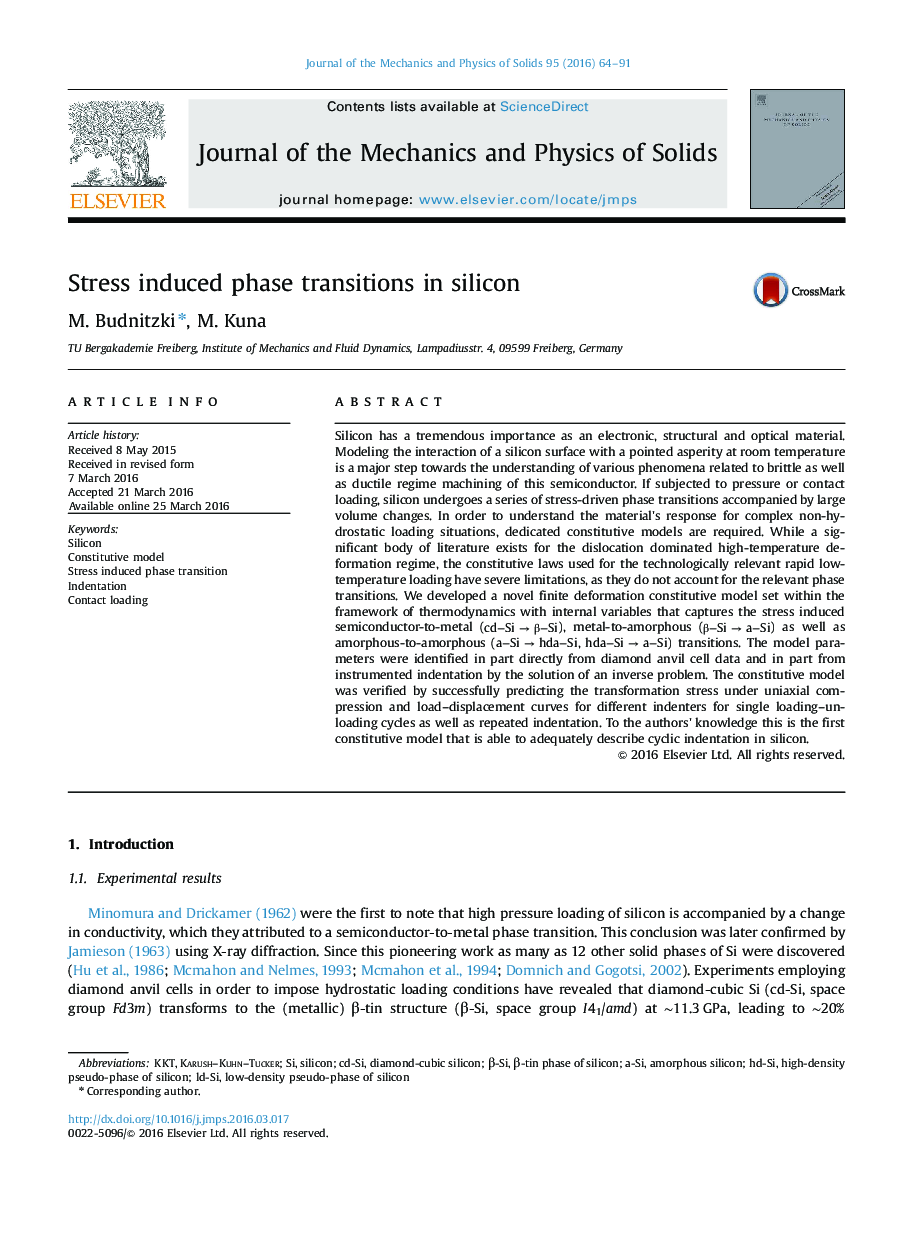| Article ID | Journal | Published Year | Pages | File Type |
|---|---|---|---|---|
| 797195 | Journal of the Mechanics and Physics of Solids | 2016 | 28 Pages |
Silicon has a tremendous importance as an electronic, structural and optical material. Modeling the interaction of a silicon surface with a pointed asperity at room temperature is a major step towards the understanding of various phenomena related to brittle as well as ductile regime machining of this semiconductor. If subjected to pressure or contact loading, silicon undergoes a series of stress-driven phase transitions accompanied by large volume changes. In order to understand the material's response for complex non-hydrostatic loading situations, dedicated constitutive models are required. While a significant body of literature exists for the dislocation dominated high-temperature deformation regime, the constitutive laws used for the technologically relevant rapid low-temperature loading have severe limitations, as they do not account for the relevant phase transitions. We developed a novel finite deformation constitutive model set within the framework of thermodynamics with internal variables that captures the stress induced semiconductor-to-metal (cd-Si→β-Sicd-Si→β-Si), metal-to-amorphous (β-Si→a-Siβ-Si→a-Si) as well as amorphous-to-amorphous (a-Si→hda-Sia-Si→hda-Si, hda-Si→a-Sihda-Si→a-Si) transitions. The model parameters were identified in part directly from diamond anvil cell data and in part from instrumented indentation by the solution of an inverse problem. The constitutive model was verified by successfully predicting the transformation stress under uniaxial compression and load–displacement curves for different indenters for single loading–unloading cycles as well as repeated indentation. To the authors' knowledge this is the first constitutive model that is able to adequately describe cyclic indentation in silicon.
